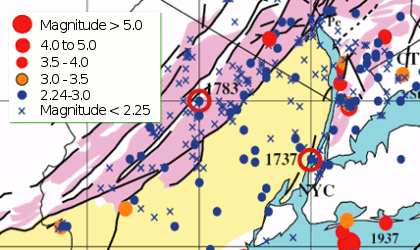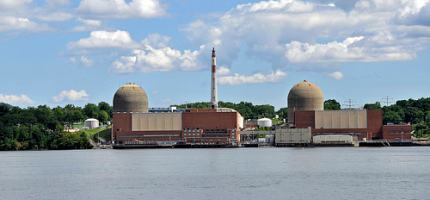The Perils of Nuclear Iran
Posted: 02/25/2014 4:32 pm EST Updated: 02/25/2014 4:59 pm EST
Given the strong likelihood that Iran will acquire nuclear weapons, why and how to prevent it from achieving its goal must be based on the assumption that the consequences will be dire should Iran realize its objective. There are two intertwined implications for the Gulf States and Israel in particular that a nuclear Iran presents: the physical and the psychological. Whereas Iran’s physical possession of nuclear weapons can be neutralized through deterrence and containment, the psychological aspect will linger as it will constantly bear a high degree of uncertainty. Together they radically change the geopolitical calculations of the countries in the region as well as outside powers, especially the US, who have significant strategic interests and security obligations to its allies in the region.
The first concern is proliferation: There is little doubt that Iran’s possession of nuclear weapons will prompt other countries in the Middle East to follow suit, even though there is widespread consensus among scholars and political leaders that Iranwill not use such weapons against any of its adversaries for two reasons: a) Iran fears retaliatory nuclear strikes by the US and/or Israel will inflict unacceptable damage, and b) possession of nuclear weapons better serves Iran’s strategic interests than their actual use.
This, however, does not offer enough comfort to the countries that feel threatened by Iran, like Saudi Arabia and other Gulf states, which are not in possession of similar weapons. They view Iran as an enduring enemy and they are unwilling to live under the cloud of a nuclear threat. Israel, which is believed to have formidable nuclear capabilities, wishes to maintain its nuclear edge and it has not ruled out the possibility that the clergy in Iran, driven by divine forces, may contemplate its use.
Saudi Arabia is likely to be the first country to seek nuclear weapons of its own without necessarily going through the process of developing a nuclear program, because the Saudis would need to acquire nuclear deterrence capabilities within a very short period of time once Iran becomes a nuclear power.
To that end, the Saudis are likely to purchase “readymade” nuclear weapons from fellow Sunni Muslim state Pakistan. Obviously for the Saudis, money will not be an object as they can spare a billion dollars or two to acquire full-fledged nuclear deterrence capabilities with the assistance of Pakistani nuclear scientists and technicians.
That said, the proliferation of nuclear weapons will not be limited to Saudi Arabia; other Arab states, such as Egypt, may well follow suit, especially because Egypt seeks to restore its traditional leadership role in the Arab world and would do everything it can to deny Iran’s hegemonic ambitions. Neither Egypt nor Saudi Arabia nor Iran itself will hesitate to withdraw from the Non-Proliferation Treaty (NPT) once it becomes known that Iran is in possession of nuclear weapons.
The second concern is that Iran will become the region’s hegemon equipped with nuclear weapons, which puts it in a position to intimidate the Gulf States and bully them to accept its own political dictates. Iran is already engaged in subversive activity in Bahrain and other Gulf States, fomenting unrest among the Shiite minorities. The old animosity between the Sunni states and Shiite Iran has now assumed an even greater impetus resulting from the wars in Iraq and now Syria, where Iran and Saudi Arabia, joined by other Gulf States, are fighting a proxy war against each other.
The third concern is miscalculation: Given the Middle East turmoil, which is unlikely to recede any time soon, the region’s states are already on edge and prone to miscalculation. When survival is perceived to be at stake, the heightened tension narrows the room for careful deliberation and meticulous investigation. Under these conditions, people operate in a sort of crisis atmosphere where time becomes of the essence and the need for immediate action assumes prominence. Thus, miscalculating the enemy’s intentions could lead to preemption with potentially catastrophic consequences.
The fourth concern is that certain nuclear-related devices, such as dirty bombs (a combination of radioactive material with conventional explosives), could fall into the wrong hands or even be provided deliberately to certain Islamic extremist groups. That is, the more nuclear weapons and materials that proliferate regionally, the greater the chance that such groups could use them against their enemies, be they Sunni, Shiite or Israeli.
Iran could conceivably provide such a weapon to Hezbollah in order to deter Israel from attacking its own nuclear facilities. Moreover, such devices could be stolen by terrorist groups. None of these scenarios can be ruled out because as mentioned earlier, Saudi Arabia, Egypt and perhaps other states may well abandon the NPT and will be left without rigorous and regular inspections by the International Atomic Energy Agency (IAEA). Moreover, there are many Jihadist groups, especially al-Qaeda, who will not miss any opportunity to lay their hands on such weapons.
The fifth concern is that the possession of nuclear weapons by Iran runs contrary to the often-repeated desire by the international community to make the Middle East a Nuclear-Weapon-Free-Zone (NWFZ). The point here is that with the exception of South Africa, which dismantled its nuclear weapons under unique circumstances, no country in possession of such weapons has ever dismantled or given up its stockpile.
With the collapse of the Soviet Union, several of Russia’s former satellite states — Ukraine, Belarus and Kazakhstan — returned their inherited nuclear weapons to Russia. During the past decade, the US and Russia only reduced their stockpiles. The three newest members of the nuclear club, North Korea, Pakistan and India, are in fact augmenting their inventory of nuclear weapons.
The problem here is that once other countries in the Middle East acquire nuclear weapons, it would be nearly impossible to free the region of these awesome arsenals. Indeed, if the idea is to make the Middle East a NWFZ, adding another nuclear power is totally inconsistent with this general objective.
Finally, states equipped with nuclear arsenals tend to take greater risks and behave recklessly because of an increased sense of immunity. North Korea exemplifies this behavior and there is no reason to assume that Iran will behave differently. North Korea has occasionally threatened South Korea and heightened tensions with South Korea’s ally and protector — the US. This too could lead to a new conflagration between the Koreas which will most certainly involve the US, a scenario that can be duplicated in the ongoing conflict between Saudi Arabia and Iran or between Israel and Iran.
There are those who argue why Iran should be prevented from acquiring nuclear weapons when Israel reportedly has a huge stockpile of such weapons. Right or wrong, Israel feels besieged; it has and continues to be existentially threatened by Iran and not the other way around. As a case in point, Israel had no concern when Pakistan, for example, developed nuclear weapons, because Pakistan never threatened Israel directly or indirectly.
This must also be understood in the context of Israel’s deep concerns over national security. Because of historic experiences, there is nothing that can persuade Israel to take existential threats anything but very seriously, and it will stop short of nothing to neutralize such threats.
That said, although Israel has all along adopted nuclear ambiguity, neither confirming or denying the possession of nuclear weapons, it has stated on a number of occasions that it will participate in any effort to establish a NWFZ in the Middle East once a comprehensive peace with the Arab and Islamic world, including Iran, is reached and sustained for a number of years in order to become entrenched physically and psychologically.
For these reasons, it is absolutely necessary that the longer-term agreement currently being negotiated between the P5+1 and Iran is airtight and could potentially prevent Iran from obtaining a nuclear weapon, however uncertain this prospect may be.
To be sure, a nuclear Iran, which may well precipitate the proliferation of nuclear weapons in the Middle East, will be like a dark, massive and thundering cloud hovering over the region, without knowing when and where the gathering storm will strike. Every country will be on high alert, which is a recipe for miscalculation and chaos with unpredictable consequences.





